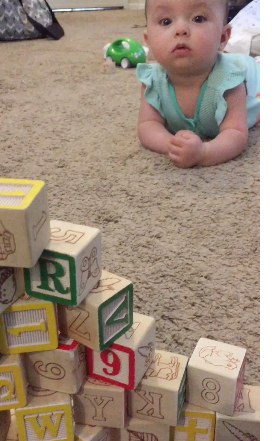The 5 Building Blocks of Success
 So you want to be a successful software developer / consultant ?
So you want to be a successful software developer / consultant ?
If you are in any kind of quantitative field you have a VAST range of options, from working at some of the largest companies in the world in marketing research to performing efficacy studies for non-profits whose staff members can be counted on one hand.
All of these broad number of opportunities require, at most, five building blocks:
- Programming concepts – You need to understand scope, do-loop, arrays, functions
- Data management – The thousand ways that users can enter data, and how to keep it from screwing up your results
- Working in a software development team – this is the part “self-taught” programmers are often not taught – documentation, testing and debugging
- Statistics – coming from the age when we inverted matrices by hand with a piece of pare and a pencil (not kidding) SAS, SPSS, R, Stastica, JMP and even Excel have made this a hundred times easier from when I started in the field
- Domain specific knowledge – by that, I mean if you are working in aerospace know something about what a transmitter and receiver are, know that a male and a female plug is a thing. If you are in biostatistics, understand survival analysis, relative risk.
(Yes, I know I said four in the previous post but then I thought about the importance of being able to work as part of a software development team and it’s my blog, so hush up.)
Since I started (mostly) with SAS, I’m going to talk for the next few posts about how starting as a SAS programmer can be like a Dr. Seuss book – “Oh, the places you’ll go!” My main point, as I have said before (weren’t you listening?) is that it doesn’t matter what language you use in the beginning. Eventually, I will tell you why SAS is a great place to start – better than many others – but it is not eventually yet. Patience is a virtue.
Let’s start with programming concepts. Now, I’d had a bit of BASIC, Fortran and COBOL before I got to SAS (yes, shut up, I’m old and in fact, yes I DID use a keypunch machine with punched cards like those women in Hidden Figures. When the movie came out, one of our interns, in all seriousness, asked me if I was in it. I’m not quite that old.)
The basic concepts I use almost every day:
Arrays – I’ve written about those on this blog a dozen time. One of the most frequent uses I make of SAS is to score tests, which requires creating an array of answers from a respondent and a second array of items scored correct or incorrect. Our game, Making Camp, that teaches multiplication and division, has a virtual trading post and a wigwam, both of which make extensive use of arrays. All of the items you can “buy” with the points you earned from solving math and history problems are in an array.
SOME SAS ARRAYS
Data scored ;
set mydata.data2013 ;
array ans{70} q1- q70 ;
array correct{70} c1 – c70 ;
array scored{70} sc1 – sc70 ;
SOME JAVASCRIPT ARRAYS
var things = [
“art/tomahawk.png”, “art/dog.jpg”, “art/pottery.png”, “art/deer_skin_sm.png”,
“art/bass_side.png”, “art/arrows_and_quiver.png”, “art/turtle.jpg”, “”,
“art/parfleche.png”, “art/feather_sm_side.png”,
“art/plate.png”
];
var things_name = [
“TOMAHAWK”, “DOG”, “POTTERY”, “DEER SKIN”, “BASS”, “ARROWS AND QUIVER”, “TURTLE”, “”, “PARFLECHE”, “FEATHER”, “PLATE”
];
Yes, they look a little different but the basic concept is the same.
In the SAS example, I’m matching three arrays – the answer the students gave, the correct answer and the item scored correct or incorrect.
In the JavaScript example, I am matching up two arrays, with the source for the image file and the alternate text for that element.
In her paper presented in 2010 at SAS Global Forum, Jennifer Waller says,
A SAS ARRAY is a set of variables of the same type that you want to perform the same operation on. The set ofvariables is then referenced in the DATA step by the array name. The variables in the array are called the “elements”of the array.